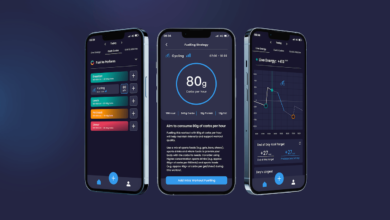India’s Data Science Education Market to Hit US$2.04B by 2028

India’s data science education market is poised for a significant surge; it has been expected that the market for data science education is also set to grow, with the market value topping US$2.04 billion by 2028, as predicted by Analytics Insight. This growth trajectory is underpinned by the country’s rising need for qualified data scientists in all sectors and the government’s incentives encouraging digitalization and information technology sectors.
Universities and colleges are also accelerating their efforts to add a tailored focus to data science education to ensure that the skills required in the rapidly changing global economic environment are being met adequately. Therefore, India has emerged as a nation with strong potential for becoming a center for to service the global talent demand as well as for pushing the boundaries of progress in this essential industry.
The inclusion of Big Data in the field of education offers the possibility to revisit educational practices, bridge the existing gaps, and grow education system effectiveness by creating personalized ascent. In addition, the technological architecture that institutions of higher education plan to use can also be improved with “data gleanings.” As a critical determinant, data science and analytics proficiency serve as an impetus for revolutionary modifications in the educational terrain. Those students aspiring to help schools and higher education institutions catch up with the essence of data analytics and analytics may do it by taking numerous academic programs.
Data Sciences in education is centered around a fundamental analytical approach that comprehensively considers the framework of education. The main idea is infrared. This domain covers identification, a combination of numerous data sources, and unique and unstructured data concerning the student, educational institution, and educational environment. This, in turn, helps to gauge the issues or factors of conduct that are of vital importance in the functioning of the system.
Analytics Insight estimates the in India to grow from US$299.75 million in 2023 to US$2.04 billion by 2028, growing at a CAGR of 46.77% during the period. According to the analysis, the on-campus data science education market is forecast to grow from US$187.29 million in 2023 to US$1.25 billion in 2028, with a CAGR of 46.28%. Even off-campus or online classes include executive programs and online certifications. The online program market sector is expected to increase from US$112.47 million in 2023 to US$787.69 million in 2028 with a Compound Annual Rate of 47.59%.
The rising popularity of education and the corresponding increase in the number of job opportunities for this career have been grounds for the rapid growth of the field. There has been a remarkable surge in the trend of local companies internationally looking for professionals who can make the working environment more effective. Universities usually deal with quite byzantine technical systems to run several divisions of their business. Therefore, communication between those systems is often disrupted. Data Science provides school institutions with opportunities to merge critical systems, programs, and workflow glitchlessly.
There has been a consistent rise in the educational institutions that offer extensive data overviews at undergraduate, graduate, and postgraduate levels. Most of this learning material is delivered through traditional and online platforms. On-campus extensive data programs typically encompass three main tracks: Bachelor’s, Master’s, and Ph.D., along with the Executive programs intended for professional students, management, MBA, integrated programs, and certifications.
These activities not only afford central intelligence regarding market size, growth forecasts, leading educational establishments, prominent recruiting companies, the main areas, and job profiles but also lead to some fundamental understanding of the industry-preferred platforms and the standard compensation structure. On a parallel path, different initiatives on which many corrupt acts occur are being introduced to bolster the application of big data and data analytics teaching.
Growth Drivers
Several factors are propelling this market towards its multi-billion-dollar future:
• Surging Demand: Data is the new currency in today’s digital landscape. Industries from healthcare to finance are hastily evolving into information-pushed businesses that require experts with facts, technological know-how, and competencies. This shift to fact-pushed selection-making calls for experts who are not best adept at extracting meaningful insights from extensive records but who can translate those insights into movements that can be efficiently implemented. Consequently, there’s a growing need for data scientists who can handle the intricacies of big data, use sophisticated analytics, and foster innovation. This development highlights the essential importance of being proficient in data in determining the future of companies and the overall economy.
• Government Initiatives: Skills improvement programs like Digital India and Skill India have further aided the Indian authorities in mobilizing a talented body of workers capable of dealing with the new-fangled digital abilities required for the data technology enterprise in India. They aim to enhance digital literacy and upskill people with the help of technology, especially in . Due to the provision of quality education and training, the programs are producing a pool of skilled workforce to sect the digital economy. This emphasis on skills development is benefiting individuals as well as pushing the advancement of sectors that depend on data science skills, thus boosting the growth of the market as a whole.
• Educational Expansion: Educational institutions are swiftly adapting to the burgeoning field of data science by broadening their academic offerings. Today, multiple degrees with multiple programs are offered to a wide variety of students. These flexible and inclusive programs are provided online and at traditional colleges. This course seeks to equip students with the academic and management skills they need to succeed in today’s data-driven world.
Challenges and Opportunities
Major obstacles must be overcome to make the U.S. reach the milestone of $2.04 billion. The key is to reduce the divide between academic theory and business practice. Providing the latest technology and some practical content in educational curriculums are essential areas that need constant attention. These challenges, however, open the door to creative solutions, fostering collaboration and strategic alliances between academic and corporate institutions. Such partnerships can encourage cooperative development, use innovation to provide students with entrepreneurial skills, and thus power the economic engine of the US.
In conclusion, the growth rate of , expected to reach US$2.04 billion by 2028, needs to be recognized as evidence of the country’s determination to create a knowledge economy. Such expansion is representative of the growing need for data scientists, especially given the rise of data science-related work across disciplines. Promoting investment in the educational system and adopting a more strategic approach would transform India into a reference market for data science education and host students and other data science professionals to meet the challenges that touchstone the future.
FAQ’s
1. What is the current market size?
The current market size of India’s data science education market is US$299.75 million in 2023.
2. What is the expected Compound Annual Growth Rate (CAGR)?
India’s data science education market is predicted to grow from US$299.75 million in 2023 to US$2.04 billion by 2028, growing at a CAGR of 46.77% during the period.
3. What factors are driving this growth?
Surging demand, government initiatives, and educational expansion are the factors driving India’s data science education market. The vast amount of data, the democratization of AI, the emergence of IoT devices, the lack of skilled analysts, and the commercial value of data insights are the main factors propelling the expansion of data science.
4. How many data science jobs are expected by 2028?
The number of data science jobs by 2028 needs to be stated directly in the search results. However, it is anticipated that 11.5 million new data science positions will be created worldwide by 2026.
5. Who are the top recruiters in this field?
Redfish Technology, Nexus IT Group, Paltron, Averity, Burtch Works, Motion Recruitment, and CalTek Staffing are among the top recruiters in the data science industry.
6. How does the on-campus market compare to online programs?
A lot of students find online data science programs to be an appealing option since they provide a great deal of relevance, convenience, and flexibility. The decision between on-campus and online programs, however, is based on the unique circumstances and learning preferences of each student.



